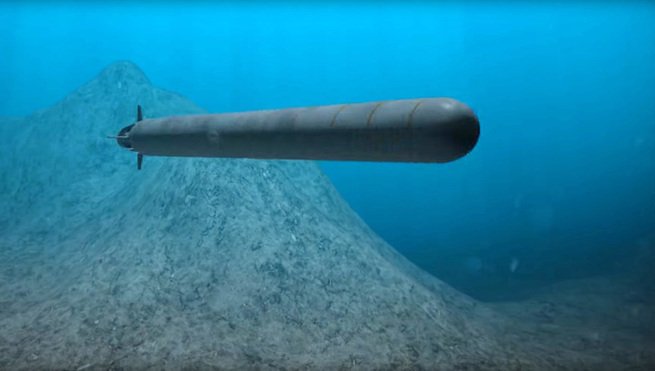The Russian Navy is all set to launch its second ‘doomsday weapon’ carrier submarine Khabarovsk by autumn this year.
“The floating of the Khabarovsk was postponed by several months — from May to the autumn of 2021,” A Russian defense industry official told TASS news agency. However, Sevmash Shipyard, the manufacturer of the submarine, refused to comment when asked by Naval News.
The Khabarovsk class, also called Project 09851, is reportedly a 10,000-ton nuclear-powered vessel with an estimated length of around 120 meters compared to the 160m of Borei-class.
According to defense analyst HI Sutton, the submarine shall be powered by one nuclear reactor, probably an OK-650B driving a single pumpjet. While the Kharabovsk-class boats aren’t expected to have a ballistic missile section, it would be the primary carrier for Russia’s most feared weapon- a nuclear-armed, nuclear-propelled torpedo called ‘Poseidon’.
The ‘Poseidon’
It is an underwater unmanned vehicle under development [and supposedly in advanced stages] by Russia’s Rubin Design Bureau, which is a nuclear-powered, nuclear-armed autonomous vehicle and can be used as a nuclear deterrent against hostile bases and naval stations.
Its launch and functioning are synonymous with an advanced, sophisticated nuclear-armed torpedo with a [speculated] blast yield of 2-100 Mt (classified). It is also capable of delivering conventional payloads.

In an article written by H I Sutton for Forbes in November 2019, he said, “Poseidon is one of the most disruptive weapons currently being developed. It is also one of the least well understood. Each new report and image provides intelligence that improves our understanding. It is designed to hit coastal cities with a 2 megaton warhead, around 133 times more powerful than the bomb dropped on Hiroshima.”
Two vessels that are speculated to carry the Poseidon — the Project 09852 Oscar-class submarine Belgorod and the Project 09851 Khabarovsk submarines — are new boats launched in 2019 and in 2021, respectively. Oscar-class submarines could carry six Poseidon torpedoes at the same time for a total yield of up to 400 megatons.
According to some reports, the Poseidon may also have a seabed or mobile site launch option. In the seabed option, known as Skif (Скиф), Poseidon can wait on the seafloor in a special container for as long as necessary.
It is known that the Russian auxiliary vessel ZVEZDOCHKA 600 (Project 20180) with ice-breaking capability is being used for testing the Poseidon drones. Thus it’s believed the ship can be also used as the platform for deploying and retrieving a seabed version of the drone. The seabed launch option was patented (RU 2135929 patent) by the Poseidon designer Alexander Shalnev.
While the specifications remain confidential, experts have stated that Poseidon appears to be a torpedo-shaped robotic mini-submarine, which can travel at speeds of 185 km/h (100 kn). More recent information suggests a top speed of 100 km/h (54 kn), with a range of 10,000 km (5,400 nmi; 6,200 mi) and a depth maximum of 1,000 m (3,300 ft).
The typical depth of the drone may be about 50–100 meters for increased stealth features in low-speed stealth mode. Low depth in stealth mode is preferred because sound waves move to the ocean floor and reduce the radius of detection. Submarines use the same strategy in silent running mode.
Follow EurAsian Times on Google News




